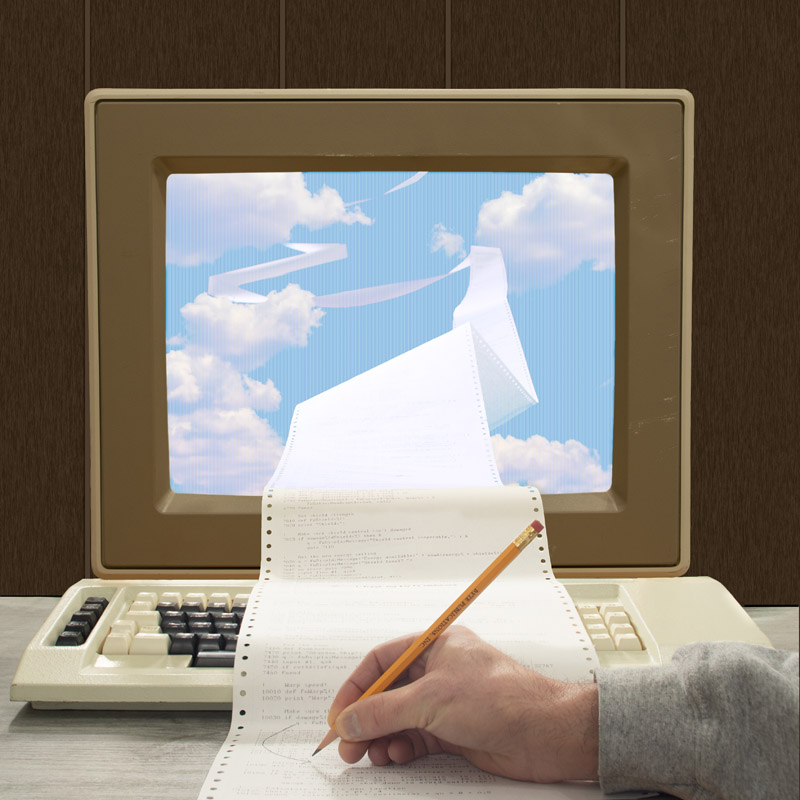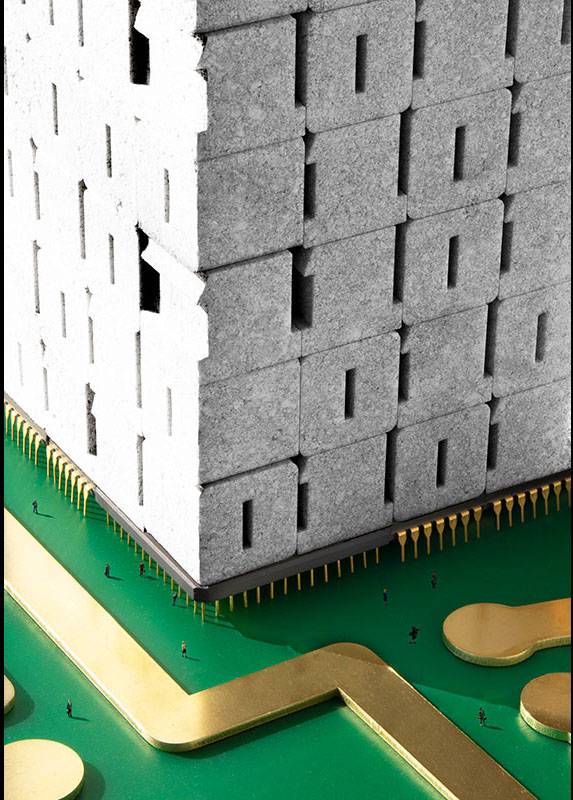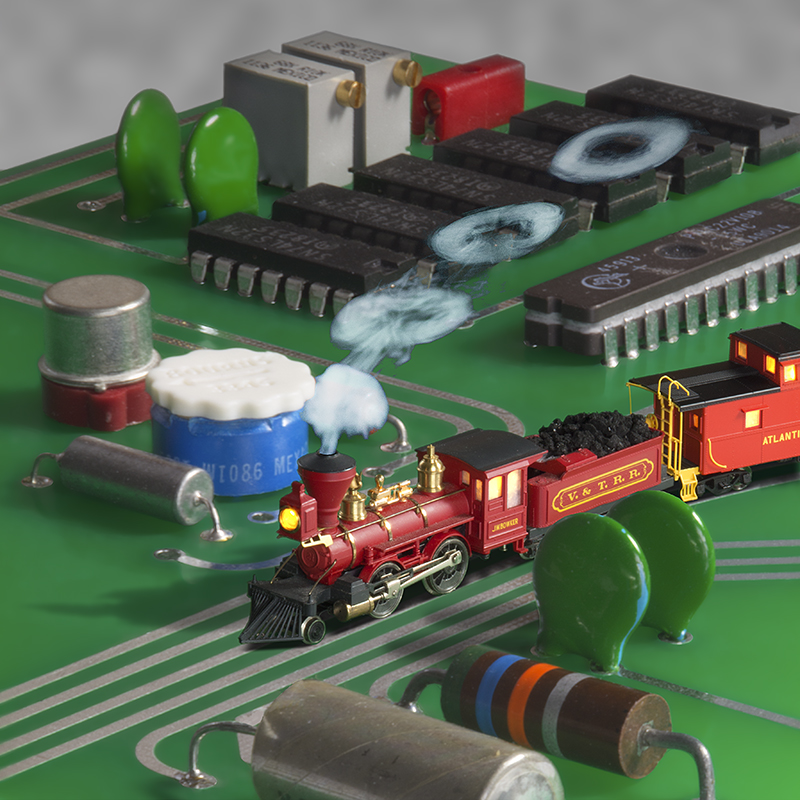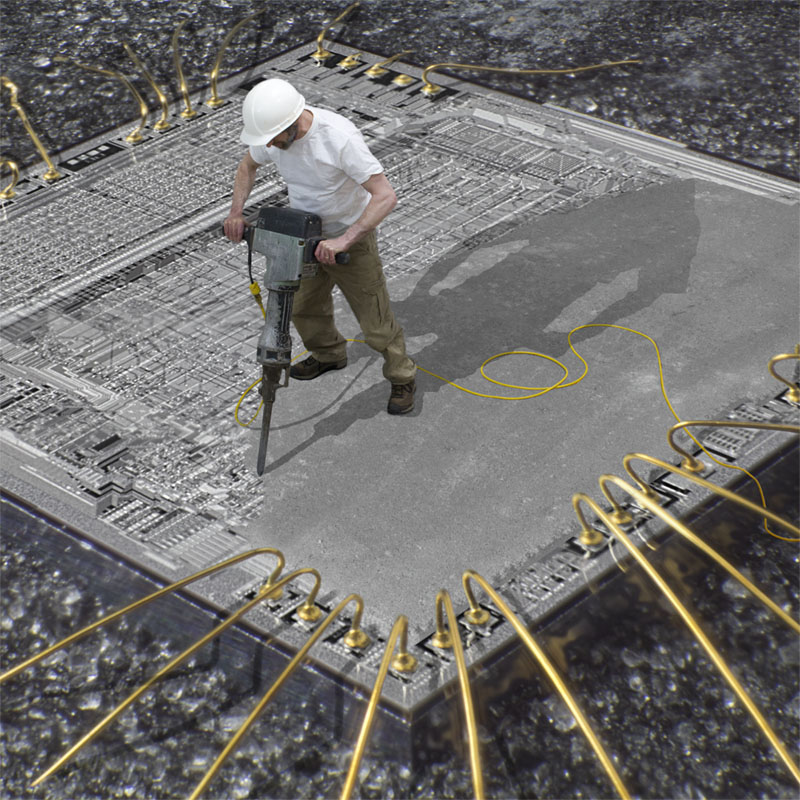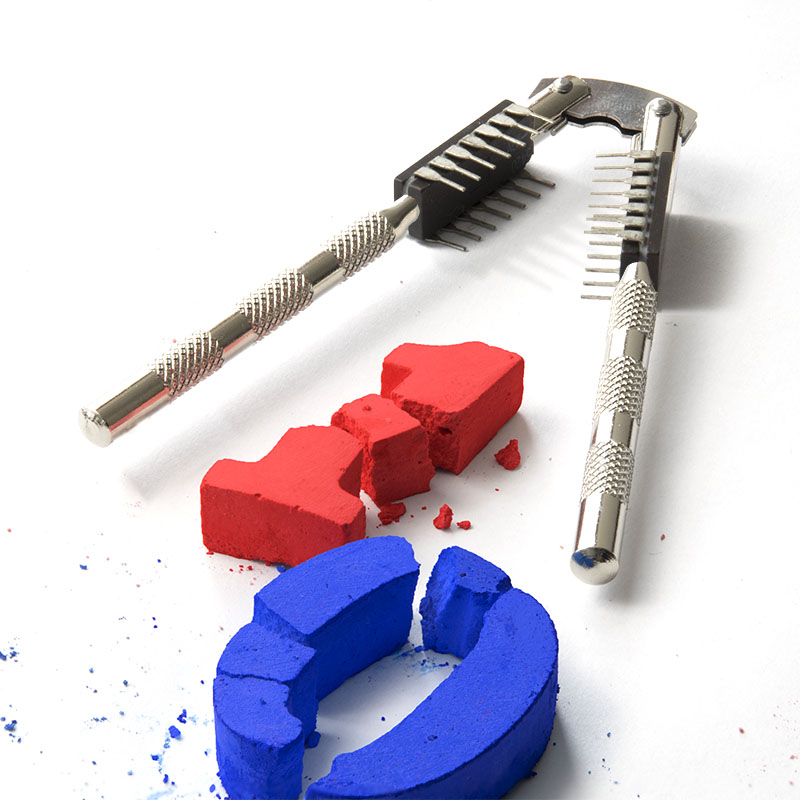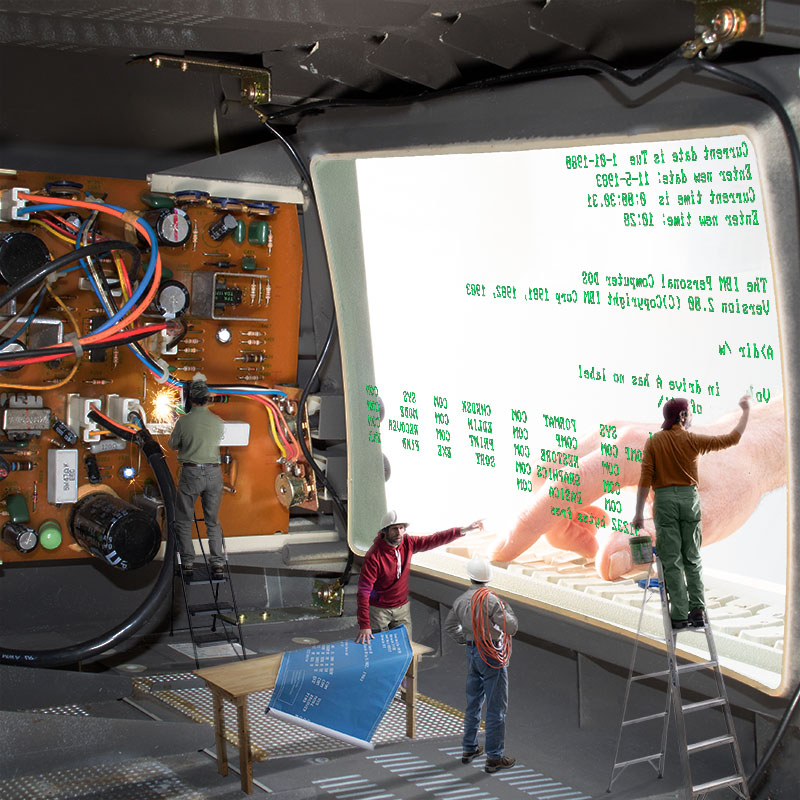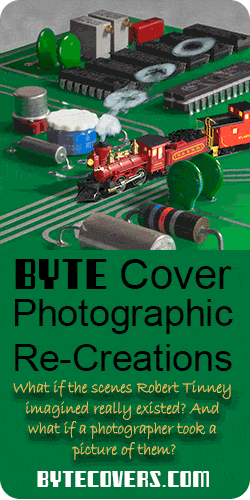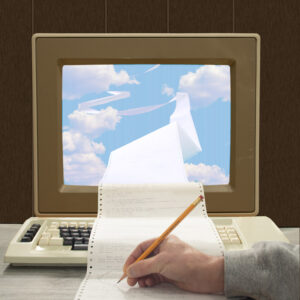
I’ve been re-creating Robert Tinney’s Byte magazine paintings as photographs. My latest work is “Software”. There are a few interesting stories to go with this one.
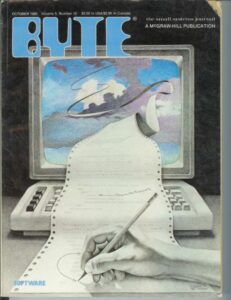 Byte’s October 1980 issue had a focus on software. Mr. Tinney painted a printout entering a computer through the screen, and extending out into the sky. As I’ve done with Inside IBM, Computer Engineering, Chip Building, Number Crunching, , and CPU Architectures, I re-created Tinney’s vision as if it were real, and as if a photographer had been standing next to Tinney as he painted.
Byte’s October 1980 issue had a focus on software. Mr. Tinney painted a printout entering a computer through the screen, and extending out into the sky. As I’ve done with Inside IBM, Computer Engineering, Chip Building, Number Crunching, , and CPU Architectures, I re-created Tinney’s vision as if it were real, and as if a photographer had been standing next to Tinney as he painted.
(Mr. Tinney has given me permission to sell my photos. You can visit my store at bytecovers.galacticstudios.org.)
My first challenge was finding a keyboard that matched Tinney’s painting. I had never seen one quite like it, and perusing through old Byte ads did not turn it up. I asked about it in a vintage computer group and someone recognized it as a Volker-Craig KB-4412. VK was a Canadian company, and they didn’t sell a lot in the US. How did Tinney end up using it as his model? I suspect VK had sent a terminal to Byte in the hopes that they would review it. Carl Helmers, the co-founder of Byte, probably grabbed a keyboard out of a storage closet and sent it to Tinney.
I wanted to find one the keyboards in real life. Surprisingly, I did. Jacob Alexander, “the keyboard king”, has a collection of over 600 keyboards. His website is http://kiibohd.com/. He used to live in Canada and he found a Volker-Craig KB-4412 in a dumpster. He was kind enough to lend it to me for the photo.
Next, there was the matter of the printout. If you look closely at Tinney’s painting, it says:
P407: Pascal407.TEXT (c) 1980 Carl T. Helmers Jr July 15, 1980 [ Pascal-407: A Unit Record Accounting System Page 40
(Ironically, there was nothing about an accounting system, or even Pascal programming, in that issue of Byte.)
But wait… Carl Helmers??? Was that a joke by Tinney, putting Mr. Helmers’ name on the printout? Or had Helmers given Tinney a printout of a program he had written, to use as a model? I Googled around and found a newsletter devoted to UCSD Pascal. On page 8, there was this ad:
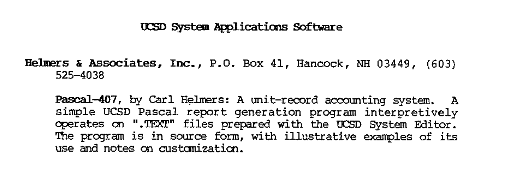
So the printout that Tinney painted was real! If I could get it, it would add great authenticity to my photo! I had to find Carl Helmers!
I managed to track him down but was quickly disappointed. He had no memory of the program. He was quite convinced he had never written any such thing.
So it was a safe bet I wasn’t going to get the source code from him.
I ended up making a printout of a BASIC game I wrote: a VT-52 version of the classic Star Trek game and photographing that.
Finally, I agonized over the image on the monitor. Ever since I saw this painting in 1980, I had assumed there was no CRT there: the monitor was a portal to an open sky. But talking to vintage computer enthusiasts, I heard that many others interpreted it as the printout entering the computer, and the sky and the printout are images displayed on the screen.
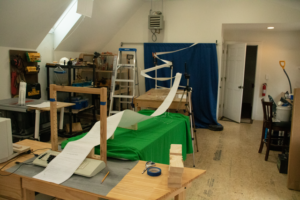
So, after photographing the printout, how should I post-process it? I tried just having the unaltered photo of the printout, with an unaltered picture of a sky, but that was too high-quality an image; it looked like a portal rather than a display on a screen. I tried displaying the sky and printout on a VGA CRT, photographing that, and pasting it in. But the CRT’s shadow mask, combined with the camera’s sensor, created an unpleasant moiré pattern.
So I finally settled on superimposing a shadow mask effect on the printout and sky.
Here are all my covers to date:
